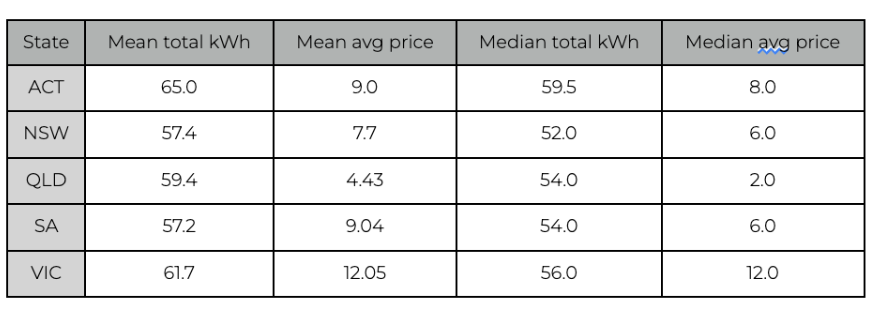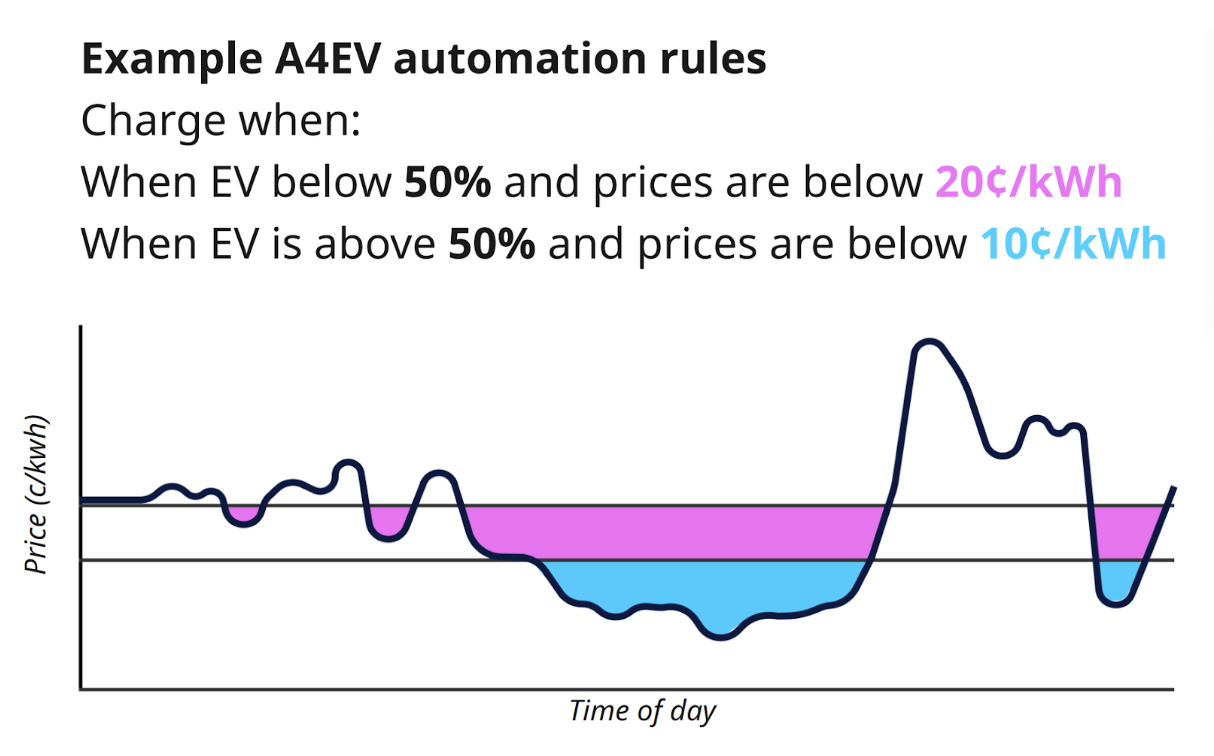I spend a lot of time looking at data to see how cheaply Amber customers are able to charge their EVs. I like to get grounded in the prices customers are actually paying so our team can understand how to keep making the Amber for EVs experience better.
The results that our customers are seeing consistently impress me, and I wanted to share them as we move through spring, into summer, and into some of the most renewable periods of the year (with the cheapest prices!)
The numbers don’t lie
Across more than 2,000 connected EVs and chargers, Amber customers are paying peanuts to charge.
- The median price paid** across a week’s worth of EV charging in September was ~5c/kWh
- The best performing 10% of customers are paying 0c/kWh (yes that’s right, each week over 200 of our customers can get all their EV charging for free!)
To put that in perspective:
- An EV uses (conservatively) 20 kWh to drive 100 km. At 5c/kWh, that’s $0.01 per km.
- A petrol car uses ~6L to cover the same distance. Petrol would need to cost just 17c/L to compete - a price Australians haven’t seen in decades.
Why is charging cheap with Amber
Unlike the EV plans offered by big retailers, Amber customers:
- Pay the wholesale price for energy, and can benefit when prices drop - especially in the middle of the day when renewables are typically abundant.
- Receive the full benefit when distributors introduce new time of use tariffs (like the solar sponge tariff in SA), as Amber passes the wholesale price to customer, and
- Can use the A4EV excess solar automation - where Amber reads solar data directly from your inverter, your EV and your consumption meter, and uses that data to calculate the available excess solar to be used for EV charging.
The result is cheaper charging that’s aligned with the renewable energy transition.
Daytime vs. Night-time charging
When you charge matters more than how much you charge.
- Customers charging 50% or more during the day are paying between 3–7c/kWh depending on their usage.
- Those who mostly charge at night? Between 14–15c/kWh.
That’s because daytime wholesale prices regularly drop, and sometimes even go negative, thanks to Australia’s booming rooftop solar and renewable energy penetration.
State by state
September data highlights how state by state differences in energy costs (e.g. network tariffs) drive differences in price paid outcomes for Amber’s EV customers.

Queensland leads the way, with high rooftop solar penetration and new daytime tariffs helping push wholesale prices down. It’s a glimpse of the renewably-powered future.
Smarter charging with Amber automation
If you have a Tesla or compatible charger, Amber’s EV automation does the hard work for you to get you the best prices:
- Set your own price thresholds (e.g. always charge when prices fall below 10c/kWh, or charge up to 20c when your ev battery is low).
- Never worry about missing a price dip, or avoiding a price spike, because the automation runs in the background.
- Optimise charging from solar. If you’ve got panels, we can help prioritise charging your EV from your own solar generation.

The bigger picture
Cheap EV charging isn’t just about saving money. Every time you charge at a price like 2c/kWh during a solar peak period, you’re doing two things at once:
- Cutting your transport costs dramatically
- Helping Australia shift away from fossil fuels faster
That’s the promise of Amber for EVs: a smarter, cheaper, renewable-powered way to charge.
**The price paid metric used is measuring the actual price paid by customers to do all their EV charging. It factors in i) all EV charging done at home, ii) the import price when the charging was performed, and iii) factors in solar charging at 0c/kwh using a ‘last on the stack’ rule. This rule means that EV charging from solar charging only gets factored into the metric when all of the household load and battery charging loads are already being met by solar production and there is excess production above this that can be used to charge the EV. This metric doesn’t factor in upfront costs of solar systems, or the opportunity costs of solar feed-in-tariffs. Prices shown were based on historical wholesale price data. The wholesale price is subject to change, and historical prices are not a guarantee of future prices.










